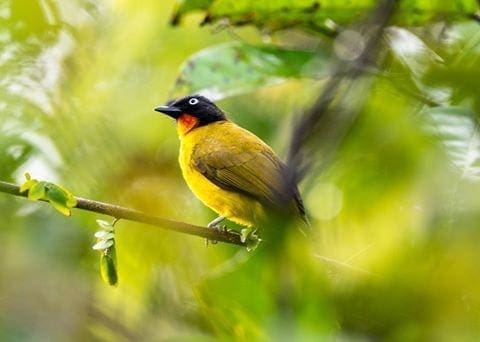
It is true when people say that where you live (or have lived) shapes who you are. For instance, you can easily spot a Manipalite in any part of the world when s/he scoffs at what people call rain or what they consider a “reasonable” price for good food. Such idiosyncrasies develop as a result of our stay in Manipal and our interactions with its environment (constructed, economical, natural and social) within that time. It is truly amazing and a little puzzling to see so much change in a person who has stayed here for even a short time.
Now though, imagine if you were made to stay here for thousands of years. It is not unreasonable to imagine that some of the changes within you would go so deep that they could transcend the behavioral and enter the physical and/or biological realm to fit this environment better. This natural phenomenon of “growing into” a place by following a very distinct locally conditioned evolutionary path is called endemism and it is by this virtue, that endemic species are considered unique to their area of discovery. These species reveal a lot about the ecological history of their habitats and the complex mechanisms by which evolution works, and are therefore, critically important to the field of evolutionary biology. In fact, endemism is often cited to be fundamental to the field as it is believed to be one of the main reasons that evolution as a theory even exists! Darwin was only able to refine his theory of natural selection because he happened to stop at the Galápagos Islands during his travels, and observed that though some creatures looked similar from one island to other, they varied in some unique ways to perfectly adapt to the respective environments of their islands.
Though endemism is rare, you don’t have to go all the way to the Galápagos Islands to catch a glimpse. Manipal, and more broadly, the entire Western Ghats region is also an excellent place to start! Endemism is rife in this area primarily because the Ghats act as a natural barrier, owing to their drastic difference in elevation and vegetation that hinder the ability to migrate. In fact, the Ghats are so effective as barriers that the difficulty with this place is that endemism is just maybe too rife! Whether it be fish, plants, insects, butterflies, birds or frogs, each species sports so much diversity that it can get a little intimidating for those who are looking to understand them. So then, where do you start?
I would recommend birds for the following reasons. First, they are arguably the most engaging because of their obvious visual appeal; people often get hooked to photographing them because they are so photogenic! Second, they can be seen at rather convenient times and locations, and third, there exists a rich documentation on location and characterization of these birds on ebird.org, Ramit Singal’s book, “A Birder’s Handbook to Manipal” and the internet. It is also easy to avail an extensive community support from the Manipal Birder’s Club to help you in your search (You will find them meeting in front of Café Coffee Day every Sunday at 6:30 AM for a birding session. Everyone is welcome!). So then, what endemic birds can you see in Manipal? Let me give you a few examples to piqué your interest.

The Babbler family, in general, are a crazy lot. Present almost everywhere in groups of 6-10, these birds are extremely mischievous and are often found jumping around and incessantly calling. Their Malabar cousin, the Rufous Babblers, though equally mischievous, can be told apart by their color which is as red as laterite mud; and their call, which is a hard metallic trill. It is impossible miss them at End Point.
Perhaps the most dazzling form of avian endemism in Manipal is seen in the Bulbul family.

The Gray-headed and Flame-throated Bulbuls are two endemic Bulbuls in the region and they are, in many ways, polar opposites of each other. While the Grey-headed Bulbul has a dull olive-green under body which tapers to yellow towards the top and finally greys near the head, the Flame-throated bulbul has a black head, bright yellow body and a flamboyant flame colored throat.

Their colors are also suggestive of their behavior; the Gray-headed Bulbul is very shy, preferring to stay in dense foliage and often being only recognized by the call which is a characteristic single note metallic “dzee”, whereas the Flame-throated Bulbul has a very melodic call and can be seen playing energetically among bushes. The easiest place to spot the Flame-throated would be in bushy flatlands on the road that leads down to Arbi Falls, after you have crossed the falls.
Manipal is also home to a record holder! The Nilgiri Flowerpecker is probably the smallest bird in India.

Though tough to spot in a general setting, if you wait around a Singapore cherry tree long enough, you are bound to see one fluttering about; they seem to favor its fruit! The crimson-backed sunbird is another honorable mention in this category typically measuring only eight centimeters long!
One thing to remember while trying to spot all of these birds is that you will probably not see them all at once or in a single day. Generally, birding requires considerable time and patience, and for these birds, this is even more the case. So, be patient and keep a keen lookout. Also, these birds make up only a small fraction of the 250-odd species of birds in Manipal. Endemic or not, these gifts of nature are truly beautiful to behold. So go ahead, bask in their glory!
This article has been co authored by Vrinda and Rahul SN.

Be the first to comment